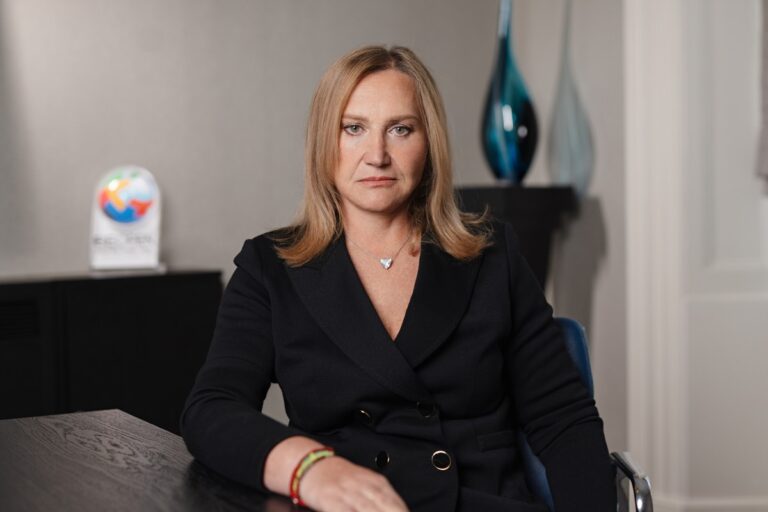If the world is to avert climate calamity, multilateral nance institutions must begin looking to large institutional investors as their partners and clients.
The creation of a new global climate nance facility, appropriately ring-fenced from current nancing initiatives, could help. EIJING – A recent report by the United Nations Intergovernmental Panel on Climate Change warns that to avoid the direst consequences of global warming, societies must make social and economic changes on a scale with “no documented historic precedent.”
As we have noted previously, only institutional investors – like pension funds, sovereign wealth funds, and insurance companies – hold enough fi nancial fi repower to address climate change. However, to minimize risk, institutional investors generally prefer to allocate their capital to operational infrastructure that is already generating stable revenue, rather than to new projects. For the same reason, their investments are focused in advanced economies, which in recent decades have received more than 70% of private-sector investment in infrastructure. Climate change requires institutional investors to move beyond these boundaries.
But they need help to mitigate the associated risks, which is why we believe the world needs a new global climate fi nance facility (GCFF), exclusively targeted at mobilizing institutional investor capital, and designed to address the shortcomings of current multilateral initiatives. Aside from several promising enterprises, governments and multilateral fi nance institutions are struggling to mobilize private capital at a scale relevant to climate change. Crucially, institutional investors have been largely absent from such initiatives, for several reasons. First, MFIs and institutional investors have different priorities. The activities of MFIs are based on member countries’ policy goals and client countries’ needs, and do not always refl ect investor demand.
By contrast, institutional investors, as commercial actors beholden to pensioners and other stakeholders, will not invest in projects that are deemed too risky or unlikely to yield adequate fi nancial returns. To attract their interest, MFIs’ terms must be competitive with those offered by the private asset-management companies used by institutional investors. Moreover, many institutional investors are unfamiliar with infrastructure investment in general, let alone in emerging markets. Consequently, MFIs must also build capacity to address these investors’ concerns about engaging in unfamiliar sectors and regions. Second, there is a disconnect between promoting private investment in lowincome and fragile countries, and mobilizing private capital for climate action in middle-income countries, where carbon emissions are far higher.
Whereas green investments in the fi rst group of countries may appeal mainly to a small set of specialized private investors and “impact investors,” larger sums of private capital, including from institutional investors, could be mobilized in the second group. At the moment, however, MFIs’ policies do not distinguish suffi ciently between these two contexts, which require entirely different strategies, resources, and institutional structures. Third, MFIs need to raise their presence on institutional investors’ collaborative platforms, take on more risk, strengthen partnerships with local strategic investment funds, and adjust their governance structures to conform with the corporate governance principles to which private investors are accustomed.
According to a recent G20 report, MFIs should also strengthen their capacity to mobilize equity investment. Finally, with few exceptions, existing multilateral initiatives – such as the Green Climate Fund and the Clean Technology Fund – mobilize private capital at the project level, rather than at the portfolio level. But, because most institutional investors manage large amounts of capital with small investment teams, they typically do not have the capacity to invest directly in individual projects; they need a vehicle or fund to channel their investments. In light of these challenges, investor control is the key to mobilizing private capital for green infrastructure.
Private investors are extremely hesitant to relinquish control to public entities, owing to fears that public bodies can be swayed by political infl uence and may not invest on commercial terms. To assuage these concerns, MFIs must emphasize the independence of the investment allocation process. One interesting model is India’s National Investment and Infrastructure Fund (NIIF), a $6 billion governmentsponsored investment fund that has been highly successful at mobilizing institutional investors’ capital. The Indian government holds a fi xed 49% minority share in the NIIF itself, and in the company that manages it, with private and institutional investors controlling the majority stake.
The NIIF operates like a standard commercial investment fund, and the government has only two representatives on the six-member board. The fund’s investment committee, which makes all investment decisions, is made up entirely of investment professionals, who (like the NIIF’s staff) are recruited mainly from the private sector. These curbs on public-sector control are designed to free the NIIF from possible political infl uence, thereby reassuring investors that the fund operates on fully commercial terms within its policy-defi ned mandate. According to a recent paper by researchers at Stanford University and Maastricht University, to mobilize institutional investor capital for fi nancing the fi ght against climate change, MFIs must start functioning in a similar way.
But large institutions change slowly, and the urgency of climate action requires disruptive changes, rather than incremental reforms. That is why a new GCFF, targeted at mobilizing capital from institutional investors and modeled on the NIIF structure, may be an important part of the answer. To be sure, while MFIs would be minority investors in the proposed GCFF, they would still play a key role in helping private investors assess risks in new contexts. MFIs would also need to share these risks and supply technical support based on their expertise across a broad range of sectors and regions. Critically, to reassure MFIs that their AAA credit rating and preferred-creditor status would not be threatened, the GCFF’s budget would need to be “ring-fenced” from other fi nancing initiatives. But these challenges can be managed.
In general, MFIs inhabit a different world from the institutional investors whose capital they seek to mobilize. To attract enough private capital to advance climate-change solutions, MFIs must start to treat large institutional investors as their partners and clients. A new GCFF, with the right resources and highlevel support, would help drive the required change












